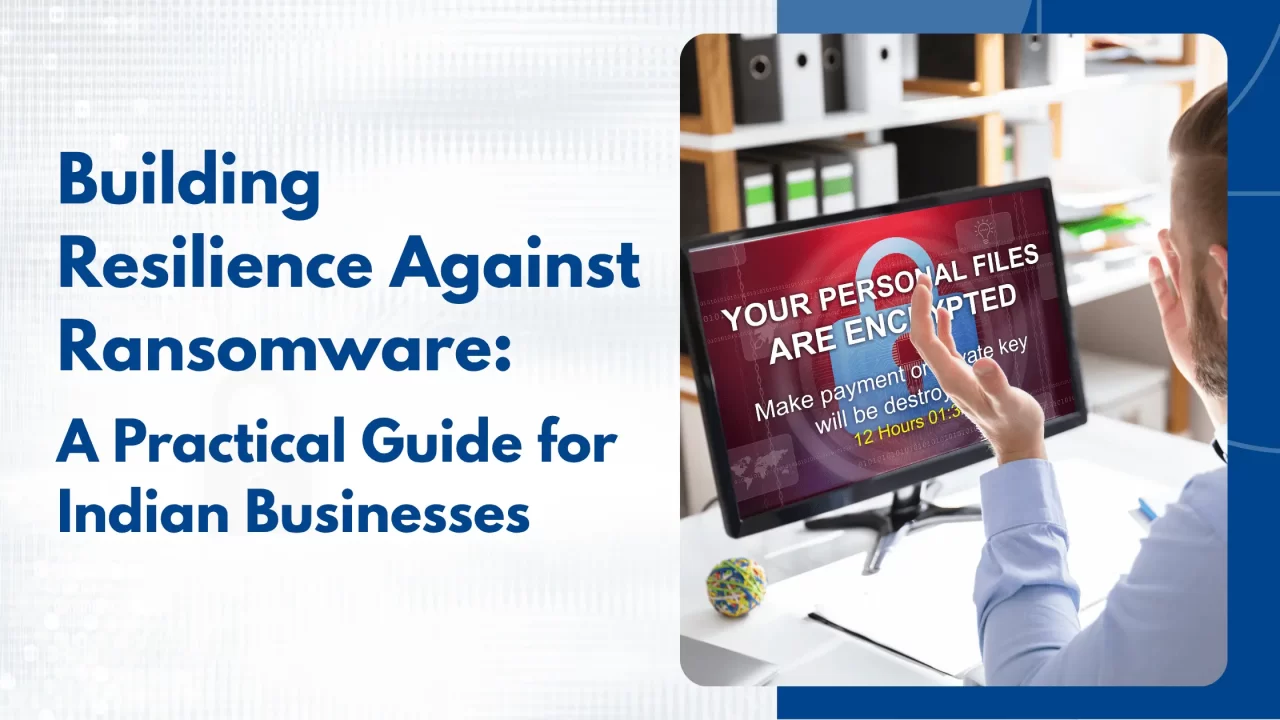Ransomware has emerged as one of the most disruptive and financially damaging cyber threats facing businesses today. In India, where digital transformation is accelerating across sectors, ransomware attacks are becoming more frequent, targeted, and sophisticated. From healthcare institutions to IT firms, no organization is immune.
This guide explores how Indian businesses can build resilience against ransomware through layered security, preparedness, and response strategies. It’s not just about prevention—it’s about minimizing impact and ensuring recovery.
What is Ransomware?
Ransomware is a type of malicious software that encrypts a victim’s data or system and demands payment (usually in cryptocurrency) for decryption. There are multiple variants such as:
- Crypto ransomware (encrypts files)
- Locker ransomware (locks users out of systems)
- Double extortion ransomware (steals and then threatens to leak data)
Attackers often gain access via phishing emails, unsecured RDP ports, outdated systems, or vulnerable endpoints.
Why Indian Businesses Are at Risk
- Low Awareness and Preparedness: Many small and mid-sized businesses in India lack formal cybersecurity training or response plans.
- Legacy Systems: Older systems without regular patching are easy targets.
- Rapid Cloud Adoption: With increased cloud use, configurations are often rushed, creating exploitable gaps.
- Supply Chain Vulnerabilities: Vendors and third-party providers often become the weak link.
According to industry reports, India ranks among the top countries in Asia facing ransomware attacks. The financial losses and reputational damage can cripple a business overnight.
Key Strategies to Build Ransomware Resilience
1. Strengthen Endpoint Security
Ransomware often begins with a compromised endpoint. Implement advanced endpoint protection and detection solutions to identify suspicious behavior early. Learn more about our Endpoint Security Solutions.
2. Backup Everything, Regularly
Maintain frequent backups of all critical data, and test them periodically. Store backups offline or in a separate secure cloud location so attackers cannot tamper with them.
3. Implement Least-Privilege Access
Restrict user permissions to only what’s necessary. Use Role-Based Access Controls (RBAC) and enforce strong authentication methods.
4. Employee Awareness Training
Many attacks begin with phishing. Conduct regular training programs to educate employees about email safety, link validation, and suspicious activity reporting.
5. Keep Systems Patched
Apply software and OS updates promptly. Attackers often exploit known vulnerabilities that have already been patched by vendors.
6. Deploy Network Segmentation
Break your network into isolated zones. This limits lateral movement in case of a breach and contains the blast radius.
7. Monitor and Detect
Use Security Information and Event Management (SIEM) systems to detect anomalies. Enable alerting for abnormal data access, encryption activity, or file modifications.
8. Develop a Ransomware Incident Response Plan
A solid plan should include:
- Steps for immediate containment
- Communication protocols
- Roles and responsibilities
- Legal and law enforcement engagement
- Recovery playbooks
Test the plan through tabletop exercises or live simulations.
9. Consider Cyber Insurance
Explore policies that cover ransomware recovery, business interruption, and liability. Ensure your cybersecurity posture meets insurer requirements.
The Role of CNAAP in Ransomware Defense
A Cloud-Native Application Protection Platform (CNAAP) like the one offered by Vanaps can:
- Continuously monitor cloud environments
- Detect abnormal behaviors in containers, workloads, and APIs
- Enforce compliance and security policies across cloud infrastructure
- Provide early warning and automated response
Explore our CNAAP Solution to learn how we support ransomware readiness in the cloud.
Regulatory Considerations in India
India’s evolving data protection and cybersecurity landscape, including the Digital Personal Data Protection Act (DPDPA), emphasizes the need for timely breach notifications and data safeguards. Non-compliance can lead to heavy penalties.
Businesses must:
- Maintain audit logs
- Encrypt sensitive data
- Report ransomware incidents to CERT-In within prescribed timelines
Conclusion
Ransomware threats aren’t going away—they’re evolving. Indian businesses must shift from reactive firefighting to proactive resilience. With the right mix of people, processes, and technology, organizations can reduce the likelihood of an attack and recover faster if one occurs.
Don’t wait for a ransom demand to rethink your security posture. Book a one-on-one consultation with our experts and assess your organization’s readiness against ransomware.



